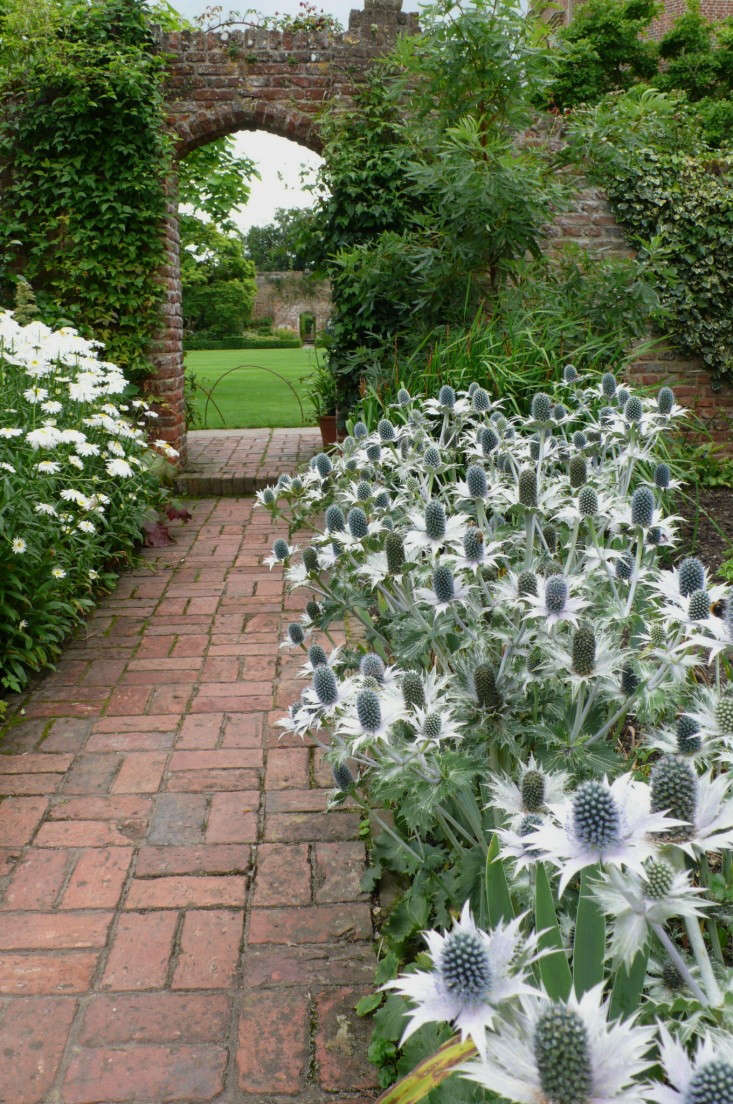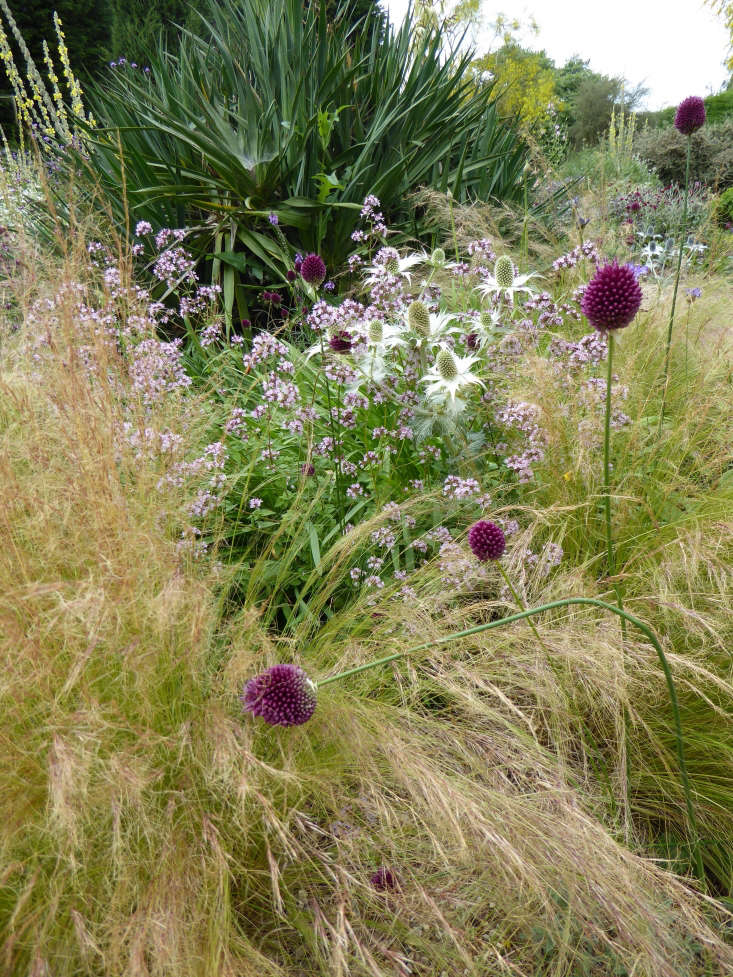Sea Holly, Eryngium: “Elizabethan Thimbles”
Of all the eryngiums (and there are about 250 varieties), it’s Eryngium giganteum or ‘Miss Willmott’s Ghost’ that is perhaps the best known —it was named after the Victorian gardener Ellen Willmott, who would stealthily sprinkle the seeds of this silvery, prickly border plant in gardens that she visited. Its incredible architectural structure has spiny leaves and jewel-like flowers that look like Elizabethan thimbles. Bees love these nectar-rich plants, which are also unrivaled for their dramatic shapes.
Read on for everything you need to know sea holly:

Despite the common name, sea holly (which actually refers to the beach-growing E. maritimum), eryngiums are perfect garden plants with a long season of interest, from the rosettes of leaves that first form in spring (although there are evergreen and deciduous varieties) to thistle flowers in summer, to the winter when the browned foliage looks beautiful dusted with frost. They are beautiful in their own right but also act as a fantastic foil for soft summer perennials like phlox, roses (they look amazing next to deep velvety maroon of R. ‘Munstead Wood’), or echinacea.

They also work wonderfully well with grasses, especially the soft billowing foliage of Stipa tenuissima; you can find this pairing at Beth Chatto’s gravel garden where E. giganteum grows alongside Allium sphaerocephalon and magenta Verbena rigida. In high summer it’s a dazzling combination.

Cheat Sheet
- It’s not just about their spiky shapes. Eryngiums can also punctuate a landscape with color, especially the zingy blues of E. bougatii ‘Picos Blue’, E. planum ‘Blue Glitter’ or Eryngium x zabelii ‘Big Blue’. ‘
- Miss Willmott’s Ghost’ is also a great addition to white gardens, where its silvery foliage will shimmer in the evening.
- While most of us are familiar with the shorter cultivars, there also are some dramatic larger eryngiums; Beth Chatto also grows E. agavifolium and E. eburneum which has a basal rosette of spiky foliage like the top of pineapple and ivory flowers, while E. pandanifolium, which can grow to 2.5m, has dramatic purple flowers that look like blackberries.

Keep It Alive
Eryngiums are both biennial and perennial, with some self-seeding more readily than others, but they all need good drainage, which is why many varieties are most content in gravel and scree gardens. But equally if you have good drainage in your soil then many varieties do well in borders too – just be sure to give them a sunny position.
For the biennial varieties, like Miss Willmott’s Ghost, buy a couple of plants in consecutive summers to ensure flowers each year. And always leave flower heads standing so that seeds can fall onto the ground in autumn.
For more of our favorite spiky flowers, see:
- Gardening 101: Thistles.
- Trend Alert: San Francisco’s Favorite Flower Truck.
- 5 Favorites: Garden-Friendly Thistles.








Have a Question or Comment About This Post?
Join the conversation